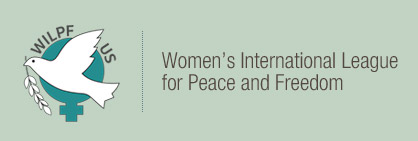The Risks of Artificial Intelligent Weapons and the Need for Negotiations and Treaties
Published on December, 15 2022by Eileen Kurkoski
Chair of the Anti-Killer Drones Group, DISARM Committee
January 2023
Artificial intelligence is developing quickly and impacting many aspects of our lives. Militaries are using it in weaponry, including nuclear weapons, to grow and maintain power, even if it jeopardizes our very existence.
It is necessary for all humankind to speak up for peaceful ways to deal with differences and conflicts. Because of the development of nuclear weapons the world has come close to destroying itself many times. We have been lucky to have wise people making decisions at key times….like the man in this story adapted from Army of None by Paul Scharre:
Lieutenant Colonel Stanislav Petrov was on bunker duty outside Moscow on September 26, 1983. His job was to report a missile launch up the chain of command to his superiors. When sirens blared and the screen flashed “launch”, warning him of a detected missile, Petrov was uncertain because this was a new system and the new satellite’s early warning system might be in error, despite its high confidence ratings. He waited.
Another launch. Two missiles were inbound. Then another— five altogether.
Petrov had a funny feeling and reasoned, why would the United States launch only five missiles when a surprise attack would more likely be massive, to wipe out all Soviet ground missiles? He put the odds of this being a real strike at 50/50. He needed more information.
He called the radar operators to see if they saw anything. They didn’t.
If he told his superiors to fire nuclear missiles, millions would die and it would start WWIII.
Petrov went with his gut and called his superiors to inform them the system was malfunctioning. He was right; there was no attack.1
If a machine took Petrov’s place, it would have done whatever it was programmed to do, without ever understanding the consequences of its actions.
This story tells of a risk of artificial intelligence, of machine autonomy, that can kill millions of people. It warns us not to totally depend on machines, even if safeguards are put in place.
Efforts of millions of people, and billions of dollars, are going into the fast development of artificial intelligence. It is a complex issue with benefits and drawbacks, and serious consequences. (See my article, “Technology – the Good, the Bad, and the Ugly” on pp. 4-6 in the Spring/Summer 2022 issue of Peace & Freedom).
The brilliant cosmologist, Stephen Hawking, warned that the “development of full artificial intelligence could spell the end of the human race.” Artificial intelligence could “take off on its own and re-design itself at an ever-increasing rate.” Hawking concluded, “Humans, who are limited by slow biological evolution, couldn’t compete, and would be superseded.”2
Do we want to find out if he is correct?
What Can We Do about AI?
What can we do about artificial intelligence (AI)? We can educate ourselves and others by sending messages about AI to all the social media sites we can find. We can write newsletters and send messages and talk with our legislators letting them know we have grave concerns about the development of full artificial intelligence, especially in the development of lethal weapons. In all our communications, we can stress that a human being must be kept in the loop when humans are targeted.
Another important message to include is demanding the U.S. spend lots more effort and lots more money on NEGOTIATIONS, MAKING TREATIES, and other NONVIOLENT RESOLUTIONS to conflicts. The U.S. may have to defend itself from AI attacks (hopefully the U.S. will not attack or provoke attacks with its AI), but we humans can improve our chances of surviving by ALWAYS pressing for PEACEFUL negotiations and PREVENTING conflicts.
To learn more about AI, consider reading Paul Sharre’s comprehensive book Army of None, listed in the footnotes, and spend time reading this site.
Contact Eileen if you want to get more involved with the anti-killer drone and autonomous lethal weapons committee: eileen4wilpf@gmail.com. Your support is needed and appreciated!
Footnotes
1. Adapted from “The Man Who Saved the World” in Paul Sharre, Army of None: Autonomous Weapons and the Future of War (W.W. Norton & Company, 2018), pp. 1-2.
2. Sharre, Army of None, p. 232.



